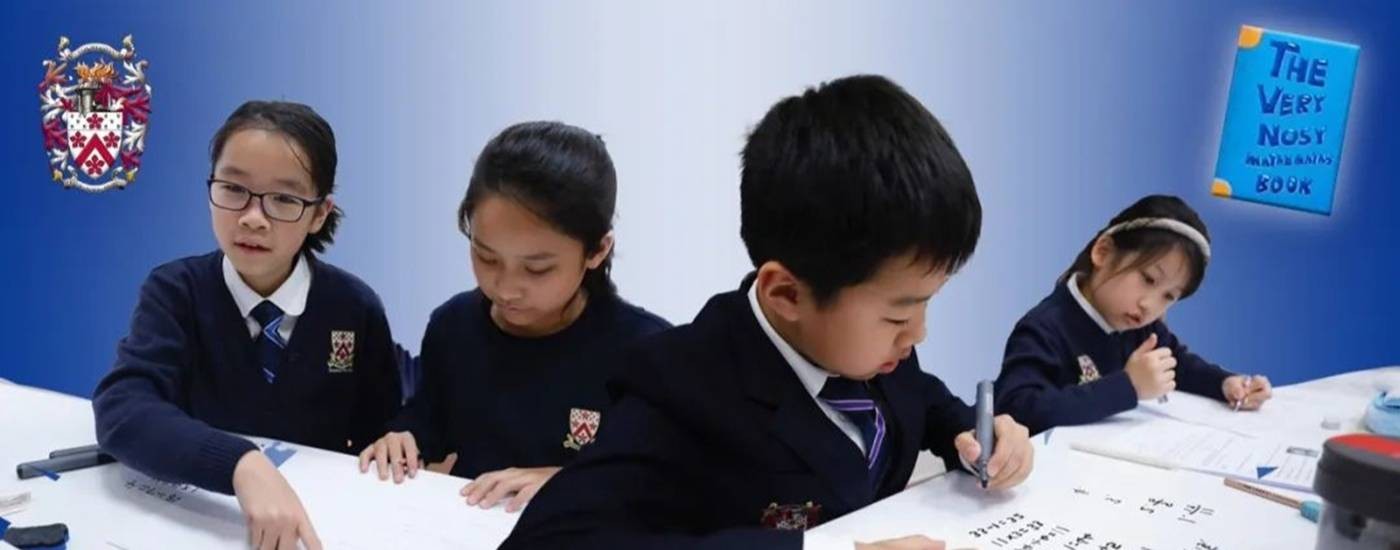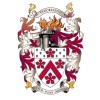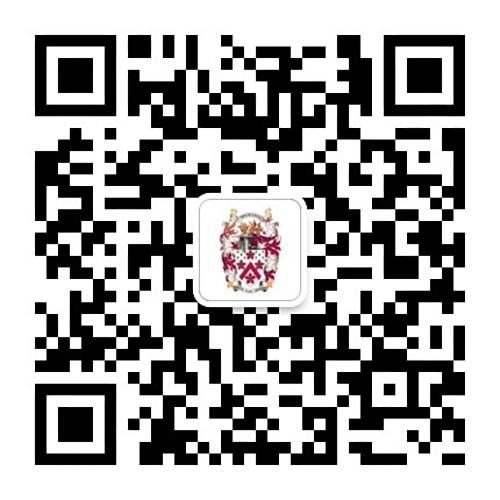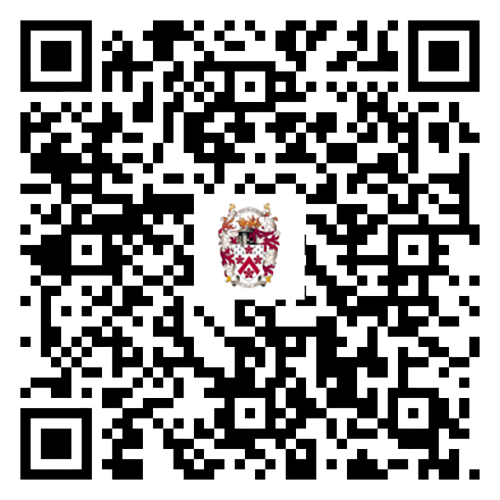Creativity in Mathematics – Nurturing Young Problem Solvers

Maths is a core part of our curriculum at Dulwich Pudong. As younger students increase their understanding and deepen their knowledge in Key Stage 2 (ages 7-11), we help them gain important ‘number sense’ through creative problem solving and investigations using real life examples. But what are the benefits to this approach as opposed to more traditional methods?
It may be a while since you have had to work out a maths problem. Why don’t you give this one a try?

Figured out the answer yet? Don’t worry, you can find it below so keep on reading.
This brain teaser is taken from The Very Nosy Book of Mathematics, created this year by a group of Junior and Middle School students to help bring mathematics to life for their peers. We will also learn more about their inspirational project below.
This brain teaser is taken from The Very Nosy Book of Mathematics, created this year by a group of Junior and Middle School students to help bring mathematics to life for their peers. We will also learn more about their inspirational project below.

The problem, and project itself, are great examples of how we encourage a creative approach in maths at Dulwich Pudong. Particularly in Key Stage 2, a crucial formative stage which bridges the gap between foundational learning in Key Stage 1 (ages 5-7) and the more demanding curriculum of secondary education.
What is our approach at Dulwich Pudong?
As with other core subjects, the curriculum follows the standards and expectations set down by the English National Curriculum modified for our international context. Using a wide range of resources, it is further adapted by our Junior School class teachers to ensure each lesson is as creative and engaging as possible.
The teaching of key concepts is reinforced using real-life examples, as part of ‘investigations’, that deepen knowledge and understanding, and teamwork is also a key part of the problem-solving process. More generally, students in Junior School engage in topic-based learning, a cross-curricular approach that integrates different subject matter under an umbrella topic or area of interest.
The teaching of key concepts is reinforced using real-life examples, as part of ‘investigations’, that deepen knowledge and understanding, and teamwork is also a key part of the problem-solving process. More generally, students in Junior School engage in topic-based learning, a cross-curricular approach that integrates different subject matter under an umbrella topic or area of interest.

As an example, Year 5 recently undertook a project focused on climate change which blended mathematics with humanities, computer science, English, and science – making it a truly cross-curricular experience. During Year 5, students are introduced to line graphs and are expected to draw and interpret them effectively. Traditionally, this topic has been taught through knowledge-based lessons where children respond to questions based on fictional data. However, in this case the goal was to foster genuine engagement by integrating a project aligned with another Junior School humantiies topic linked to the Model United Nations (MUN) programme.
In collaborative groups, students investigated whether the UK's climate is changing and prepared a report for Sir Keir Starmer, the UK Prime Minister, offering recommendations based on their findings. By using real data, the children became fully engaged and invested in the project.
At this age, we also place a strong emphasis on developing robust number skills and the ability to interact with numbers confidently. One effective method we use to achieve this is through ‘Number Talks’. At the beginning of some of our maths lessons, students are presented with a problem, such as 18 x 8, and they are encouraged to explore as many different ways as possible to solve it.
In collaborative groups, students investigated whether the UK's climate is changing and prepared a report for Sir Keir Starmer, the UK Prime Minister, offering recommendations based on their findings. By using real data, the children became fully engaged and invested in the project.
At this age, we also place a strong emphasis on developing robust number skills and the ability to interact with numbers confidently. One effective method we use to achieve this is through ‘Number Talks’. At the beginning of some of our maths lessons, students are presented with a problem, such as 18 x 8, and they are encouraged to explore as many different ways as possible to solve it.

Afterward, students share their strategies with the class, promoting collaborative learning and allowing everyone to discover new approaches. This practice not only enhances their mathematical knowledge—such as partitioning, identifying factors, and rounding—but also fosters a deeper understanding of numbers and their relationships.
What’s more, the learning doesn’t end after classes finish. We also run a range of maths-focused co-curricular activities and encourage our students to take part in external competitions, such as those run by FOBISIA and other national and regional bodies. In partnership with our sister school, Dulwich College Shanghai Puxi, we will be actually hosting the FOBISIA Primary Maths Challenge for Year 5 and 6 students in March 2026 - a great honour and something we are all looking forward to.
What’s more, the learning doesn’t end after classes finish. We also run a range of maths-focused co-curricular activities and encourage our students to take part in external competitions, such as those run by FOBISIA and other national and regional bodies. In partnership with our sister school, Dulwich College Shanghai Puxi, we will be actually hosting the FOBISIA Primary Maths Challenge for Year 5 and 6 students in March 2026 - a great honour and something we are all looking forward to.
What is the benefit of this approach?
A more creative approach to maths is one advocated by Jo Boaler, a professor at Stanford Graduate School of Education, as well as The University of Cambridge’s NRICH programme (we are one of their accredited ‘Problem-solving Schools).
A key benefit is that it helps students develop ‘number sense’, laying a solid base for more complicated learning later. ‘Number sense’ means learning how to interact with numbers flexibly, rather than just through rote memorizing. This gives students the ability to work out the connections between key maths concepts and use this understanding to find different solutions to the same problem.
Another benefit is that it allows for us to differentiate how individual lessons are taught, to ensure students get the most out them whatever their ability. This ‘low threshold and high ceiling’ approach means maths is accessible to everyone but that, importantly, the most gifted students are still stretched.
Andrew Foster, our Junior School Maths Coordinator, who has a cameo role in The Very Nosy Book of Mathematics (see the illustration below!), explains the benefits of this approach.
A key benefit is that it helps students develop ‘number sense’, laying a solid base for more complicated learning later. ‘Number sense’ means learning how to interact with numbers flexibly, rather than just through rote memorizing. This gives students the ability to work out the connections between key maths concepts and use this understanding to find different solutions to the same problem.
Another benefit is that it allows for us to differentiate how individual lessons are taught, to ensure students get the most out them whatever their ability. This ‘low threshold and high ceiling’ approach means maths is accessible to everyone but that, importantly, the most gifted students are still stretched.
Andrew Foster, our Junior School Maths Coordinator, who has a cameo role in The Very Nosy Book of Mathematics (see the illustration below!), explains the benefits of this approach.

In this environment, they develop core thinking skills and the knowledge and understanding to solve any problem. This means they can not only do a calculation but also explain how they did it and other possibilities to find a solution. That really opens the possibilities for their learning and lays solid foundations for more complicated maths when they move up to Senior School.
- Andrew Foster, Junior School Maths Coordinato

The Very Nosy Mathematicians
Talking of problems, did you work out the answer to the question above? The number on the last printed page is 123!

It is a particular favourite of the team behind The Very Nosy Book of Mathematics. The book was developed by a group of gifted young mathematicians ranging from Year 4 to Year 8. The students decided to take what they had learned in class and present it in the form of engaging problems with fun illustrations and images. Their aim was to make maths more accessible and enjoyable and connect the subject to everyday life.
“I have always wanted to use mathematics to bring people together and make more people appreciate it,” explained Year 7 student Seth L, one of the driving forces behind the project.
The book's creation as a collaborative effort, where real-life problems linked to school life were transformed into mathematical challenges. Seth worked closely with team members Jadon W (Year 8), Celina K (Year 7), and Anna Z (Year 5) to write the problems, while others contributed the illustrations.
“I have always wanted to use mathematics to bring people together and make more people appreciate it,” explained Year 7 student Seth L, one of the driving forces behind the project.
The book's creation as a collaborative effort, where real-life problems linked to school life were transformed into mathematical challenges. Seth worked closely with team members Jadon W (Year 8), Celina K (Year 7), and Anna Z (Year 5) to write the problems, while others contributed the illustrations.


Writing this book has been a journey that involves countless hours of research, writing, revising, and drawing. But beyond the intellectual exercise, it was an emotional journey as well — driven by the passion for mathematics
- Seth L, Year 7

In this book, we capture the true spirit of mathematics—not just dry formulas but exciting discoveries, one after another. Each page reveals hidden secrets of numbers crafted with love and curiosity.
- Anna Z, Year 5
Through this work, the team hopes to inspire others to appreciate mathematics, proving that with creativity and collaboration, the world of numbers can be both fun and relatable!










